6 Predictions From Our Employee Experience Experts
MAGAZINE EMPLOYEE EXPERIENCE | VOLUME 23, ISSUE 1 FEATURED ARTICLE
02

6 Predictions From Our Employee Experience Experts
06 How Upskilling Your Workforce Benefits Your Organization
10
6 Ways to Change Your Work Culture
14 5 Big-Name Organizational Culture Examples That Win The Talent War
20 The HR Professional's Guide To Diversity & Inclusion
contents
from the desk of TANYA FISH
Entering a new year, it’s always good to pause and reflect on what has been learned and what might be anticipated for the future. As you think about your employees and how you provide their experiences, programs and benefits, here are some insights you may find valuable.
First, employee experience is imperative, and talent retention is critical. With salary increases projected at 4.6% (ADP National Employment Report) to offset inflation and the demands of new talent salaries in 2022, employees have a lot of power in the employment relationship. Compensation alone is not enough to address that challenge.
Gartner research indicates that 59% of candidates will accept a job with better work-life balance versus 10% higher pay. 53% of candidates will accept a job that gives them more skills over 10% higher pay.
Employee experience is the combination of all touchpoints you have with your employees starting with your brand and culture. Prioritizing the employee experience is a must!
Flexibility on where and when employees work continues to be an important topic. The appropriate amount of flexibility provides a strong work-life balance that employees need to thrive. Cultures that live beyond the physical walls of an office space are key considerations.

To understand ways to change and improve your work culture no matter where employees work from, see page 10. For examples of organizational cultures winning the talent war, check out page 14.
Employees are looking for a career, not just a job. They want to build a career at a company they trust and believe in. After caring for your culture and work-life balance, another priority is identifying career paths and opportunities for employee development and growth. Upskilling and reskilling your workforce is critical to remaining competitive; yet getting your employees engaged in career paths and learning opportunities is a challenge for most. Our engagement experts have identified best practices to address this challenge. Check out page 6 to learn more.
If you are looking to create a great place to work with an eye on the future of work, check out the trends our team has identified on page 2.
We look forward to engaging with you in 2023.
Tanya Fish ITA Group Solution Line Leader, Employee Experience

PREDICTIONS FROM OUR EMPLOYEE EXPERIENCE EXPERTS
What do employees want, expect and value most from employers? That’s the question every employee experience expert is determining in 2023.
What employees look for in their daily experiences has evolved quickly in the past few years. Savvy organizations are re-evaluating talent offerings beyond functional benefits (e.g., salary, bonuses, etc.) to create more engaging experiences. We asked six ITA Group experts to predict the top 2023 trends in employee experience strategy. They analyzed industry data and considered what they’re hearing from clients to compile a list of predictions for the new year.
ACTING ON EMPLOYEE SURVEY RESULTS
If you’re like many of our clients, you’ve sent out three times as many surveys this year than the previous two years combined. Why is that?
We believe it’s because of shifts in what employees want from their employers and the velocity of that change. Organizations tried to keep up with changing desires, but couldn’t fully know what employees wanted until they asked—so more surveys were sent out. But that was last year.
This year, the simple act of “asking” might not be enough. Organizations that prove they listened to employee feedback through provable action, changes and investments in the employee experience will foster stronger purpose and alignment to the organization’s mission. At ITA Group, we often say we can be the PR for HR. Here’s a potentially sobering question to consider as you create communications and plans for 2023: Have you thought about and formalized the PR of your listening efforts?
Mitchell Stearns Analytics Advisor
CONNECTING INITIATIVES
THROUGH MEANINGFUL COMMUNICATIONS
Right now in the employee experience space, conversations are buzzing on many topics— on everything from evolving benefit offerings to formalizing ESG policies to navigating how employees are increasingly seeking organizations whose values connect to their personal senses of purpose. At first glance, these initiatives might feel separate, but they have common ties.
The most successful employee experience programs connect the dots for team members so they can see how the whole strategy comes together.
Employees want to understand their organization’s mission, be engaged with their daily work and advocate for their organization to others. Streamlined communications that simplify these complex topics and are readily available no matter where employees work enable employees to do all that and more.
Brian Tallman Employee Experience Creative Services Advisor


insights magazine | 3
ENGAGING EMPLOYEES IN AN INCREASINGLY HYBRID WORKFORCE
After the pandemic shifted how we work and with Gen Z emerging in the workforce, hybrid work is here to stay. According to ADP Research Institute, 64% of the workforce would consider looking for a new job if they were required to work in the office full time.
It’s more important than ever for organizations to use technology to keep employees connected with each other and the organizational culture. Research from McKinsey & Company supports the idea that personal relationships still matter for employees, and organizations were able to achieve a 55% improvement in employee engagement by recognizing employees through nonfinancial means.
Dedicated technology and employee experience platforms can remove proximity bias and help drive engagement in the hybrid workforce through personalized nudges and recognitions where they’re needed most.
Jarod Trecker Product Manager

BALANCING EMPLOYEE & EMPLOYER NEEDS THROUGH BEHAVIORAL REINFORCEMENT
Employees currently have the upper hand in the employment contract, and it’s creating a competitive talent marketplace. Many employees want work/life freedom (including flexible work hours and remote work), which some organizations see as harmful to productivity and results.
How do you engage employees while allowing flexibility? Start by clearly identifying and educating employees on the cultural and business behaviors needed to succeed. Wherever possible, use data to track key business behaviors and align those behaviors to goals and incentives. If there are behaviors that need to be engrained in how employees do their work, reinforce those behaviors through recognition.
The magic happens when leaders and employees all know what matters. Align incentives and recognition to reinforce key behaviors, and drive the success and organizational culture both employees and employers crave.
Tanya Fish Employee Experience Solution Leader

Looking for ways to bolster your employer brand throughout 2023? Read our blog to implement key elements that support ongoing branding efforts, and you’ll be off to a good start.
info.itagroup.com/employer-branding-efforts
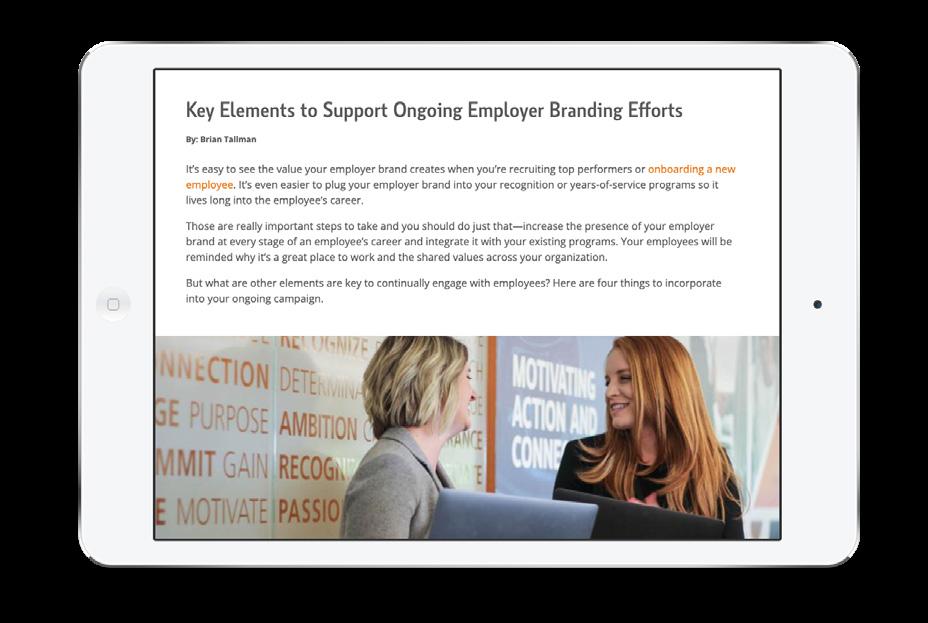
4 | insights magazine
GROWING EMPLOYEE EXPERIENCE INTEREST IN EUROPE & APAC
In 2023, we're predicting more interest for in-region employee experience programs in Europe and Asia-Pacific. Traditionally, programs are pushed from North America outward, sometimes even being forced upon the global workforce for international organizations. Now, we're seeing organic growth in employee engagement initiatives in Europe, the Middle East and APAC.
Based on what we're hearing from partners and prospects, the growth is being driven by the fact that employees from these regions— especially younger employees—have the same engagement concerns as those in North America (turnover, remote work, need for advancement opportunity, work/life balance, etc.). There isn’t one simple global answer to what will attract and retain talent.
With workforces more diverse than ever, the key to retention is knowing employees, listening to them and personalizing touchpoints to ensure they feel valued.
As an organization, it’s critical to have a clear employer brand and employee value proposition. They should articulate to potential talent and existing employees alike why they should choose and stay with your organization.
INCREASING PERSONALIZATION
Mirroring how consumers are increasingly accustomed to highly personalized experiences, team members now expect personalized employee experiences. Homepage layouts, communication cadences, awards that meet their personal preferences, engagement messaging and dashboard data are all being segmented by employee role, down to the individual employee.
Taking a hyper-personalized approach to employee experience strengthens program outcomes and keeps employees engaged because they perceive the information provided to them as relevant and tailored only to them.
Sarah Kidawa Employee Experience Strategy Advisor

The Key to Success in 2023 & Beyond: Understand the Needs of Employees

One key feature ties together all the trends— listening to employees and acting on their feedback. Employees across the globe want employers to support them as they restructure their relationship with work. In today’s market, you must be employee centric to be an employer of choice and create the strongest employer value proposition possible for your organization.
Kurt Hosna Director of Global Strategy
insights magazine | 5
How Upskilling Your Workforce Benefits Your Organization

How can employers combat this skills gap while retaining their current workforce? A brand’s ability to upskill, or its capacity for training and developing its employees to expand their skillsets, creates a significant competitive advantage in our increasingly technology-driven world. In fact, according to McKinsey, “to emerge stronger from the COVID-19 crisis, companies should start reskilling their workforces now.”
BENEFITS OF UPSKILLING EMPLOYEES
According to Gallup, the cost of replacing an individual employee can range from one-half to two times the employee's annual salary— and that's a conservative estimate. A 100-person organization that provides an average salary of $50,000 could have turnover and replacement costs of approximately $660,000 to $2.6 million per year.

Upskilling, or reskilling, is a smaller investment than hiring and training a new worker. Reskilling creates a more well-rounded, cross-trained workforce, and increases team’s effectiveness. It does more than boost your bottom line, too. Take a look at four benefits.
1
. Improves Retention
No one wants to work at a company that doesn’t invest enough in its employees’ career development. Upskilling ensures employees' skillsets won’t become obsolete, and shows people you care about their careers and futures.
2
. Boosts Morale
Employees who have training and development opportunities are happier in their roles and have a brighter outlook on their future with the company. Reskilling your workforce helps them see the path to career advancement, and gets them excited about what could be next. Knowing they’re working toward something that will better their lives creates a deeper sense of purpose.
3.
Increases Customer Satisfaction
Happy employees lead to happy customers. When workers are happier with their company and believe in what they are working toward, they do better work. Plus, upskilling keeps your workforce up to date on industry trends, allowing employees to offer the best recommendations and insights to clients and prospects. Clients are willing to pay more to work with a more knowledgeable, proactive team. And when clients are happy with the work you do, they become stronger brand advocates.
insights magazine | 7
Keeping up with the pace of technological advancement is a challenge for companies of all shapes and sizes. While technology creates powerful business opportunities, it also creates skills gaps, particularly in the manufacturing, healthcare and construction industries, where the demand for skilled workers is especially high.
4 . Attracts New Talent
According to SHRM's skills gap research, 83% of HR professionals are having recruiting difficulty and of those HR professionals, 75% say there is a shortage of skills in candidates for job openings. Of course, when business is successful, chances are you’ll need new talent to add to the experienced, upskilled workforce. Suddenly you have a wide pool of diverse talent to choose from when it comes time to expand your team.
HOW TO UPSKILL YOUR WORKFORCE
Before creating an upskilling strategy, conduct a discovery phase to see what skills employees need. Be proactive and stay ahead of the industry’s future demands to get an edge on competitors.
Make training and development opportunities readily available and affordable for everyone. There might be employees—the ones with high productivity and great morale—you’ll want to focus on more. That’s great. But make sure everyone has access to those opportunities. You might be surprised who takes advantage and benefits the most from the offerings.
Accommodate different learning styles. Some employees might do best in a traditional classroom setting with a teacher. And a completely different segment may might prefer walking through courses online. Others might prefer microlearning (watching 15-minute videos that cover topics in small increments).
Providing something for all learning styles ensures the maximum amount of employees will want to participate.
Empower employees to choose their path. Put them in charge of their personal development plan, and help them make their own decisions around career progression.
When employees have the freedom to choose what areas they develop, they take more ownership over their personal and professional development.
Reward employees for upskilling efforts. Give them an incentive for completing training and development to reinforce its importance. Positive recognition leads to a happier, more productive workforce.
ENGAGE EMPLOYEES IN UPSKILLING
All people are motivated in different ways, by different things. Organizations that focus on the employee experience see impressive results in retention, revenue and profitability. What does it look like, and how can you do it, too? Download our ebook to find out how to create and sustain a successful employee experience.
info.itagroup.com/enhance-ex
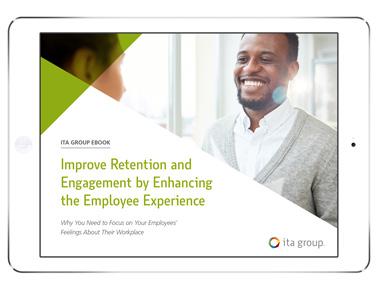
8 | insights magazine


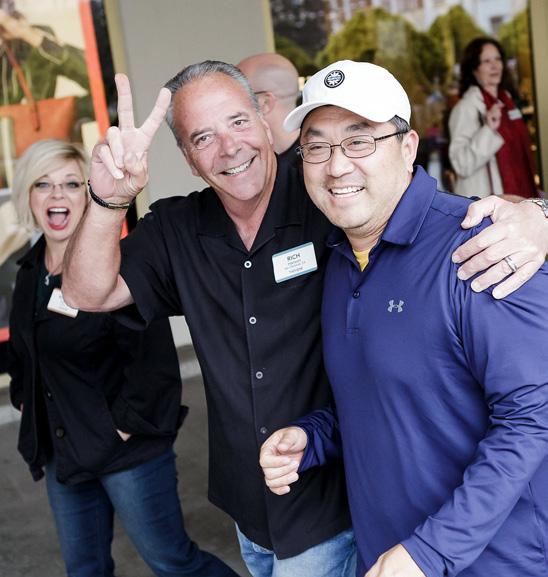


insights magazine | 9 Events | Incentive Travel | Employee Experience | Channel Partner Solutions | Customer Solutions itagroup.com/contact-us Jumpstart your plan for growth. Contact us. THE KEY TO COMPANY GROWTH Personalized, Unique Engagement Experiences ITA GROUP: YOUR TRUSTED ADVISOR SINCE 1963 By delivering world-class experiences for your global customers, employees, and channel partners, we see deeper connections with the organization. It’s this connection that drives growth and long-term brand loyalty.
6 WAYS TO CHANGE YOUR WORK CULTURE
 By: Christina Zurek, Employee Experience Expert
By: Christina Zurek, Employee Experience Expert
For organizations seeking to become more agile and innovative, culture change is often a must. But creating and sustaining the long-term adjustments that come with change is often the most challenging part of the transformation.
10 | insights magazine
Innovation and agility demand new behaviors from team members that can initially feel at odds with established corporate culture norms—especially if your company historically focused on operational predictability and efficiency. But culture change can’t be achieved through a mandate. It lives in the collective hearts and habits of your individual team members and their shared idea of “how things are done around here.” Someone with authority can demand compliance, but they can’t dictate optimism, trust or conviction.
Regardless of whether you’re proactively looking to change culture or think it might be on the horizon, culture will be a focus for many companies looking to level-set following the pandemic. According to PwC, 43% of CHROs plan to focus on reinforcing corporate values to maintain or improve culture. This is because making hybrid and anywhere-work actually work in practice requires focus on the behaviors that feed your desired culture, no matter where people are physically working.
Culture Change Takes Time
A culture change doesn’t happen overnight, though. Behaviors are embedded deeply in people and moving your employees toward the vision you have requires an understanding of what motivates people to change.
“It’s fundamentally really hard to change company culture—but you can enhance its best characteristics,” says Marissa Mayer, Sunshine Co-Founder and former Yahoo CEO. “You have to repeat your mission, and your purpose, and the values you care about, over and over and over.”
The problem is people don’t often understand how what they do fits into the organizational mission and vision. What’s worse, only 10% of HR leaders are confident their organizations understand their culture to begin with. Today there’s renewed interest in refining (or revising) employee value propositions (EVPs). Research by Aon found 41% of employers planned to re-evaluate their EVP in light of the crisis. This step is one of the best ways to meaningfully connect your people to the work they do and the company they do it for. Creating those connections are a key way to build buy in for the desired culture.
Best Practices for Creating Culture Change
Demonstrate authentic messages when communicating the value of creating a positive culture for your people. A culture that inspires current employees and impresses potential new hires will attract and retain quality, engaged employees. A lot of clients (including ourselves) have gone through the process of improving company culture. Here are our top tips.

insights magazine | 11
UNCOVER WHICH BEHAVIORS NEED TO CHANGE & WHICH DON’T
With so many organizations lacking a consistent understanding of what their current culture is, it’s important to ensure behavioral goals are clear before initiating a significant culture change.
Ask questions like:
> What behaviors do we need to stop ?
> What behaviors do we want to continue?
> What behaviors do we need for the future?
Company culture is everybody’s responsibility to maintain but it’s only fair to expect that if people know what the desired behaviors and changes mean for them.
UNDERSTAND MOTIVATION THEORY
Human beings are complex and can’t be motivated to change using a one-size-fits-all approach. Giving all employees the same incentive for achieving various tasks may have worked a hundred years ago, but the workplace today is far more complex —and employees expect to be treated in ways that are personally relevant. Finding the right blend of motivators that appeal to employees can be complicated but it’s a must if you’re asking people to change.
Companies should do an assessment with leadership and employee focus groups to learn how different segments of the workforce are motivated and what could be done to improve motivational appeal.
PROVIDE INDIVIDUAL & COLLECTIVE SENSE OF PURPOSE FOR EMPLOYEES
In his book, Payoff: The Hidden Logic That Shapes Our Motivations , behavioral psychologist Dan Ariely shows us how understanding intrinsic motivators that shape human behavior can “get to the heart of motivation.”
He states that motivation is driven by having a connection to an organization and feeling you're involved in meaningful work, even if it’s challenging or painful. Research attests that meaningful work might not necessarily make someone happy, but it can give a person a sense of “purpose, value and impact—of being involved in something bigger than themselves.”
According to McKinsey & Company, 89% of survey respondents agreed with wanting more purpose in their work, a proportion that tracks closely with academic research. Moreover, 70% of the employees surveyed said that their sense of purpose is defined by work. Clearly, a gap exists and culture is one way to nurture that need.
12 | insights magazine
1 2 3
CREATE INTENTIONAL CONNECTEDNESS
Ariely remarked that “the more a company can offer employees an opportunity for meaning and connections, the harder those employees are likely to work and the more enduring their loyalty is likely to be.”
Managers can help increase connectedness and loyalty by creating a culture that demonstrates its commitment to employees. Offering long-term investments in employees such as education, training, health benefits, career pathing and professional development, as well as investing in their wellbeing and personal growth, will have a positive and longlasting impact.
Creating a culture of recognition, trust and goodwill results in higher engagement and the feeling of autonomy for employees— and, connectedness to the organization.
COMMUNICATE, COMMUNICATE, COMMUNICATE
People need to understand how they fit into an organization’s goals and objectives. Communicating your brand’s mission and vision during new hire onboarding and once a year at your annual meeting isn’t enough.
Start by developing a campaign to employees that reinforces your messaging and expectations throughout the year. Help them understand how each of their roles and responsibilities support the ideals of the company and how working together using desired behaviors will improve organizational outcomes.
RECOGNIZE & REWARD DESIRED BEHAVIORS
Recognizing star performers promotes role models for others to emulate. But don’t forget about those taking incremental steps to support the overall mission and priorities within their roles.
People need to be recognized for a job well done while having a sense of ownership and accomplishment. They want meaningful work that contributes value to the organization. And they’ll work harder if they have it and are recognized for it.
At its most basic, company culture is about the way people behave. And every behavior, no matter how complex, is malleable. To help shape culture, first establish the desired behaviors and build buy in from your team members to make the behavior changes using tactics rooted in motivational strategy, communication, recognition and awards.
insights magazine | 13
6 4 5
Big-Name Organizational Culture Examples That Win The Talent War
 By: Christina Zurek, Employee Experience Expert
By: Christina Zurek, Employee Experience Expert
WARBY PARKER

Since 2010, Warby Parker has been carving a niche for themselves by offering no-nonsense eyewear at a low price. In a Business Insider interview, the brand’s co-founders detail how they evolved a thriving company culture from small startup all the way to 1,000+ employees today.
The first step, co-CEO Neil Blumenthal explains, is viewing your culture brand not just as a logo, but as a point of view. It’s what makes your company unique, and every new hire has a different take on what it should be.
Accordingly, Warby Parker put emphasis on collaboration when determining what the core values of the company should be. “We realized when we were 20 or 25 people … we hadn’t really articulated the criteria or the values that were most important to us as an organization,” said co-CEO Dave Gilboa.
“We went through an exercise [where] people wrote down individual values that are important to [them] … We got over 200 different values which led to a bunch of discussions about which values were the same, which ones were different, which ones were critically important.”
Maintaining a great company culture is impossible if you can’t agree on the behaviors that drive the way work gets done at an organization. Warby Parker’s focus on honest and open communication to create that alignment was instrumental in helping them gain cultural clarity.
The Takeaway
To build engagement and culture and truly embrace the future of HR, don’t brush aside input and feedback from employees. Deeply consider what they have to say— that’s how you build autonomy and buy in for the behaviors that drive success for your organization.
insights magazine | 15
As the war for talent escalates, an intentional and consistent focus on the culture of your brand is the best defense to protect your most prized team members. Here’s a look at what five big-name brands are doing to build great organizational cultures—and what you can do to emulate their success.
THE MOTLEY FOOL
According to Gartner research, when employees feel like their well-being is supported, their discretionary effort can increase by more than 20%. And when it comes to employee well-being, financial services and investment company

The Motley Fool has found that variety is key to encouraging healthy lifestyles. The company’s “Chief Wellness Fool,” Samantha “Sam” Whiteside, explains:
“An employee well-being program is one that is inclusive of all wellness needs—it goes beyond just physical wellness and traditional programs. It includes fitness, sure, but it also includes mental wellbeing, nutrition and eating more plantbased foods, opportunities to connect with your community, positive behavior change and disease prevention as well.
It’s not just having free snacks or a pedometer challenge every few months. It goes beyond all of those things and really encompasses every facet that can make a person feel sound in body, mind and spirit.”
The Takeaway
The importance of well-being is top of mind for many organizations, but what really sets this strategy apart is an understanding that employees need to be treated first and foremost as humans with a variety of needs that, when met, reinforce the value an organization places on them.
SALESFORCE
While ubiquitous in sales circles, Salesforce is also famous for its community giveback program. This community giveback concept—dubbed the “1-1-1 model”—encourages companies to donate 1% of their yearly equity, 1% of their products and 1% of their employees’ time to community volunteer projects.
“The business of business is improving the state of the world,” said Marc Benioff, Chairman & CEO, Salesforce.
Since its founding, Salesforce has given more than $240 million in grants and 3.5 million hours of community service, and provided product donations for more than 39,000 nonprofits and education institutions.
Outside of just Salesforce, this concept has been picked up by many other organizations who also recognize the importance of positively contributing to the communities where their people live.
The Takeaway
Giving back to your community has proven to carry incredible benefits. Not only are you helping others, but you’re also supporting team building, gaining brand advocacy from the outside community and potentially attracting new employees.
16 | insights magazine
ZAPPOS
Online shoe juggernaut Zappos might be more famous for their culture than their products. In fact, alongside an endless selection of sneakers, they offer a threeday “culture camp” where they teach HR professionals how to build a culture like theirs. The secret: Obsessive, radical, wow-worthy attention on customer service. No matter the cost. Since they first burst upon the e-commerce scene in 1999, Zappos has been unwavering in their focus on delivering the best possible service experience for customers. They have always been the first to let you know how they are “powered by service.”
In fact, the company has gone to extraordinary lengths to show their commitment, including moving from San Francisco to Las Vegas to build an in-house customer service team.



“I attribute most of our growth over the past few years to the fact that we invested time, money and resources in three key areas: customer service, company culture, and employee training and development,” said former Zappos CEO Tony Hsieh in a Harvard Business Review article.
The Takeaway
People feel good about doing business with companies that treat their people well. And employees that are treated well do good work, which is why organizational culture matters. The external reputation of your organization is inexorably tied to the hope and passion people have for your company on the inside.

Making Culture The Top Priority
“When we work hard for something we don’t believe in, it’s called stress. When we work hard for something we love, it’s called passion.”
SIMON SINEK
Successful organizations have a clear idea of who they are and what they stand for—and we can see this in action with these five brands.
Each of these featured organizations is committed to leading with a clear purpose that is shaped around their culture —including employee engagement and well-being and a shared passion for service. In turn, it creates a culture where people thrive, which leads to incredible business results.
Looking to drive a purpose-driven culture in your organization? We’d love to help. Get in touch at itagroup.com and NKD.co.uk .
insights magazine | 17
GENERAL ELECTRIC
Giving employees immediate performance feedback is a growing necessity in today’s connected world. To stay agile and attractive to employees, 125-year-old General Electric needed to make this change, too. Not long ago, GE introduced a performancedevelopment process centered around a smartphone app, which employees use to assess peers and leaders on an ongoing basis rather than in a once-a-year conversation.
The move was part of a broader overhaul of the company to become nimbler and to streamline decision-making. “The world isn’t really on an annual cycle anymore for anything,” said Susan Peters, GE’s former Chief Human Resources Officer who spearheaded the change.
How to Get Started Building Culture

Renowned author and management consultant Peter Drucker once said that “culture eats strategy for breakfast.” Positive organizational culture (loosely defined) is the intangible attraction individuals, as well as organizations have to your brand. And if you want to win the talent war, it’s your secret weapon. When culture is designed to engage and motivate employees to work in tandem through a shared purpose, identity and intent, people can withstand anything.
Discover how to foster a culture that values resilience with our ebook, How to Build a Resilient Organizational Culture.
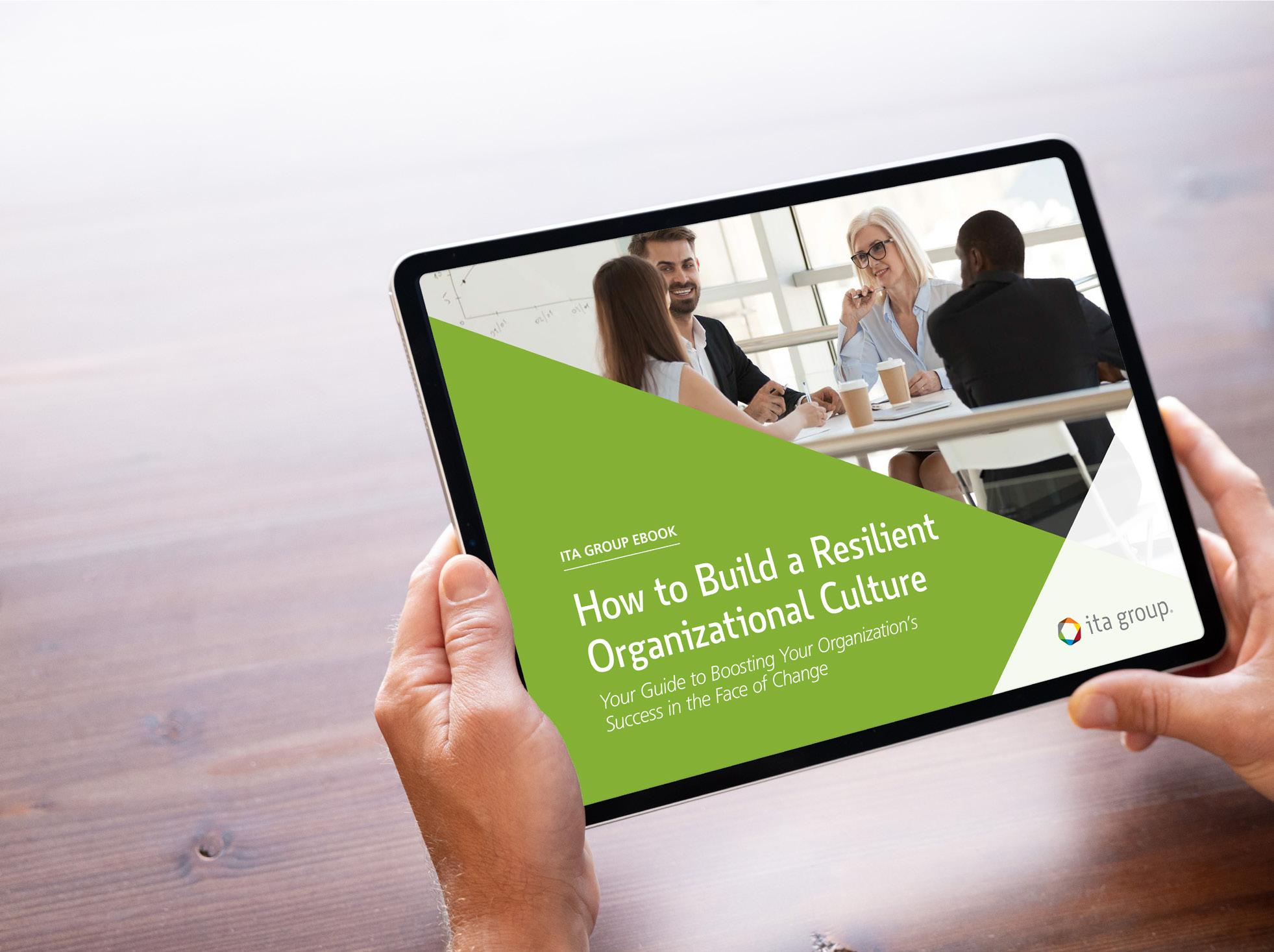
info.itagroup.com/resilient-org-culture
At the time, she remarked “I think some of it, to be really honest, is millennial-based … what we’re trying to do is to make a major shift in the company’s culture towards simplification and better, faster outcomes for customers.”
The Takeaway Research shows 78% of employees quit for reasons that could have been prevented if their employer had listened and acted to resolve underlying issues. It makes sense then that in-person and online feedback—an important method of offering individualized, manager-to-employee mentorship—must happen on a more regular basis. The result? Employees who know you care have a huge reason to stay.
18 | insights magazine


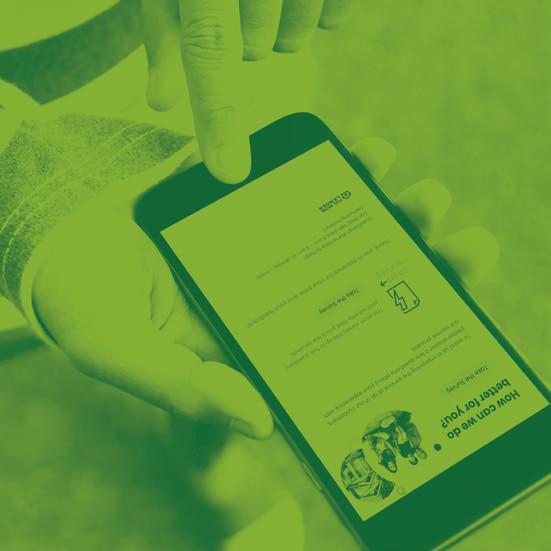

Events | Incentive Travel | Employee Experience | Channel Partner Solutions | Customer Solutions Employees Are Loyal Channel Partner Sales Increase Customers Buy More When authentic connections are made between organizations and their audiences, the results are amazing. ITA GROUP: YOUR TRUSTED ADVISOR SINCE 1963 itagroup.com/contact-us No matter the audience, we’ll help you foster an authentic connection. Contact us to enhance your marketing plan.

THE HR PROFESSIONAL'S GUIDE TO DIVERSITY & INCLUSION
 By: Rob Danna, Senior Vice President, Sales & Marketing
By: Rob Danna, Senior Vice President, Sales & Marketing
Diversity and inclusion is a critical component of a thriving organizational culture. As an HR professional, it’s your job to create an environment conducive to the different experiences and perspectives among the workforce to attract and retain talent, and remain competitive in the industries in which you do business. But that’s no easy feat. In this guide, you’ll learn new ways to connect diversity and inclusion to business value and, in turn, shape a workplace culture that thrives even in the most unpredictable business climates.
insights magazine | 21
STRATEGIC INCLUSION AS A VALUE PROPOSITION? ABSOLUTELY.
Better yet, is strategic inclusion among your strategic priorities? If not, it should be. It’s among the hottest of topics for organizational leaders, and not just because inclusive teams drive performance (according to Deloitte Australia, inclusive teams outperform their peers by 80% in team-based assessments.)
No, it’s more than just performance numbers. Diversity and inclusion enormously influence factors that impact the culture of your organization, specifically recruitment and retention of the unmatched, often hard-to-come-by talent that drives those results.
But before I speak to how you can attract and retain through diversity and inclusion, let me first deliver some context.
How Diversity Drives Inclusion
Diversity and inclusion have come a long way—they’re no longer the compliance-based, meet-the-minimum-requirements-set-forth-bylaw prerequisites they once were. Now, they’re more progressive, aiming to get the best possible return for the investment (the investment being diversity itself). Because diversity represents all the ways we differ, inclusion harnesses those elements productively. Beliefs, backgrounds, talents, capabilities and ways of life—inclusion aims to leverage them to facilitate an environment of involvement, respect and connection, and, create business value.
Deborah James, Secretary of the U.S. Air Force, explains why diversity is so powerful within military culture as it relates to the overall mission and how it comes down to aligning and motivating any organization’s most valuable asset: its people.
Inclusive Teams Outperform Their Peers By 80% In Team-Based Assessments
“Diversity is important because we have to be top-notch in innovation. We are a high-tech force… facing enormous challenges around the world. We need people that can handle ambiguity and work on their feet. People that can make splitsecond decisions with life-or-death consequences…”
“These young people grow and become leaders, not by [someone] just telling them what to do, but by getting them to all march in the same direction and take on a mission. All of which comes back to diversity of thought, innovation and problem solving.”
Making Inclusion Strategic
As organizational leaders and proponents of aligning and motivating people through strategies like events, incentives and recognition, our goal is to create emotional connections to the mission; to get our people to march in the same direction.
Strategic inclusion allows us to do just that. It takes the concept of inclusion one step further by fundamentally focusing on solving problems and realizing opportunities with people rather than against people. What’s more, it offers a viable framework for sustainable business success and can serve as a value proposition for your organization by:
> Driving a meaningful and measurable advantage for attracting and retaining talent
> Providing meaningful and measurable value to the customer
> Contributing a meaningful and measurable increase in shareholder value
22 | insights magazine
—DELOITTE AUSTRALIA
Strategic Inclusion’s Spot in Your Big-Picture Plan
Now that you know the why of strategic inclusion, we’ll help with the how. Read on to see how individuals and organizations are adopting and harnessing diverse and inclusive practices.
LOOKING FOR WORLD-CLASS TALENT?
LOOK TO INCLUSIVE ORGANIZATIONS.
What does inclusion look like within your organization today? Is it strategic? Are you going beyond the compliance-based, minimumrequirements-set-forth-by-law prerequisites to harness and maximize the potential of your greatest asset: your people?
And, as a result, are you benefiting from a talent recruitment and retention perspective? If you are, great. Keep it up. If not, let’s talk about how to strengthen your culture to foster strategic inclusion. But first, hear what science has to say about it.
Your People Long for Inclusion
Science tells us that people have a deep-seated need to belong; to be noticed; to be appreciated. The need to belong is embedded in human DNA.
As a species, we’ve neurologically evolved to depend upon our fellow humans to survive and thrive. We can actually observe via functional MRI how our brain’s capacity to think more creatively and process more complex problems is enhanced by the secretion of serotonin and oxytocin.
These “belonging” neurotransmitters are released when we feel connected to each other, to common causes, and to trusted leaders. In a nutshell, we’re hard-wired to work more effectively together than apart.
Your Culture Lays the Groundwork For Inclusion
More specifically, how your brand’s mission and vision translate through to your culture is what provides the foundation—and it has to be intentional. You can’t mandate culture, but you can exemplify it. It takes care and strategy to do so, though.
Intentionally aligning culture is what gives people a unified purpose to stand behind in times of disruption and challenge, and times of success. What’s more, when people are emotionally connected to your organization’s mission, they produce more and perform better. You know you’ve achieved alignment when they’re putting their hearts into their work (and your numbers reflect it).
So how do you get there? Follow the waypoints of respect and inclusion to intentionally strengthen your culture through the strategic design of corporate initiatives.
What Intentional Design Looks Like
In “Leaders Eat Last,” Simon Sinek said, “If you take care of your people, the numbers will take care of themselves.” And it’s true. When people’s diverse backgrounds are respected, they feel included and are therefore prepared to emotionally connect with your cause. But before hanging that poster and rolling out the next mantra, take a step back.
Start from the beginning and consider each employee’s role and their purpose for joining the cause. Look to focus groups and surveys to objectively gauge what is most meaningful to people as it relates to organizational culture.
Different people are moved by different things, so really listen. Even if you disagree, hearing the feedback lays the groundwork for respectful debate, and ultimately, a powerful culture.
insights magazine | 23
Then, leverage the takeaways to begin designing intentional employee-focused corporate initiatives. Take it one step further and use them to create an enhanced brand strategy that supports those initiatives. Or go the extra mile and craft an enhanced culture story for your organization. Whatever you do, do it intentionally in an effort to take cultural transformation to a new strategic level.
Attracting & Retaining World-Class Talent Isn’t About Compliance. It’s About Culture. Corporate initiatives are more successful when built on a foundation of strategic inclusion. Without it, they’re significantly more prone to be approached with apprehension and trepidation. And it’s important to view strategic inclusion as conceptually separate from compliance-centered diversity hiring and procurement-focused vendor sourcing and, rather see it as a framework for sustainable business success.
Strategic inclusion proposes that world-class talent flows toward inclusive organizations that embrace diversity as the best way to create great products and services for customers, innovate to solve challenging problems, generate above-market profits and provide meaningful career paths for highly engaged and loyal employees. And isn’t that what we all want?
We've talked about how incorporating diversity and inclusion attracts and retains world-class talent. In the next section, we'll discuss how to weave inclusion into the very core of your overall organizational culture design.
5 STEPS TO CREATING A CULTURE THAT FOSTERS INCLUSION
Smart HR professionals must celebrate and support all of their team members. Bringing in a mix of people from all walks of life simply creates a better environment, where people feel welcome and accepted.
Doing otherwise would devastate employee potential and hinder valuable business results such as employee recruitment and retention.
Here’s a startling fact: according to a recent Deloitte survey, 72% of respondents said they would leave or may consider leaving an organization for one that has more of the inclusive aspects they desire. In fact, nearly a quarter of all respondents have already done so.
However, there’s a way to better, more strategically foster inclusion—and it lies in an organization’s foundation. Or rather, in its culture.
Like it or not, the world is getting smaller, and globalization is demanding cultural assimilation. That means everyone—from individuals to organizations to countries—will struggle to survive in the future when they’re rooted in the past. The strength of your culture can and should position you for the future, but the creation of a strong culture doesn’t happen by accident. It’s intentional. And that means you need a plan. We did it in our own organization, and we’ll continue to execute on it for the rest of our existence.
24 | insights magazine
In a survey 72% of respondents said they would leave or may consider leaving an organization for one that has more of the inclusive aspects they desire.
—Deloitte Australia
Inclusion Starts With Building Solid Culture Foundation
1 Define what you want your culture to feel like. That vision starts at the top, but often the best ideas come from below. That said, it’s critical for senior leadership to believe in inclusion and act accordingly. Because you’re the one who sets and implements policy, it’s important that your belief is genuine for your people to foster it.
2 Outline your culture’s existing strengths. You’ve got some great things already working, so identify them. And conduct a quick evaluation of their effectiveness. Such awareness will reinforce the foundation, remind team members of existing cultural assets, and guide better decisions.
3 Conduct focus groups and gather intelligence. Bring people together without HR and senior leadership, and use surveys and focus groups to collect ideas on how to improve inclusion. The best ideas typically don’t come from HR or senior leadership, so embrace the concept and trust your community.
4 Define necessary behaviors. For each initiative to take hold, it’s important to define specific behaviors. List them. Communicate them. Foster them.
5 Communicate. What that looks like is up to you. One of our biggest successes was an annual celebration that aligned with our re-energized, inclusive culture. We invited all team members—both on site and remote— which allowed us to embody our strategy in a live setting. But outside of that, we continue to reinforce the message by providing frequent recognition of inclusive behaviors through an employee well-being platform, and by leveraging multi-media messaging because, as we know, everyone learns in a different fashion.
Moving Forward With Your Inclusive Culture
It probably won’t be easy (change never is), but when you know the objections, you’ve got the power to overcome them. So, know this. Typically, organizational leaders are resistant to change because:
> They’re skeptical due to past failed change efforts
> They don’t feel involved in the change process
> They don’t understand the reason(s) for change
> They feel threatened by the change
> Competing priorities create change fatigue
> Systems, processes and incentives don’t support change
The Results Pay Dividends
At the end of the first year following our culture transformation, our organization was awarded six different “top workplace” distinctions. We also reduced voluntary turnover by 4%, increased revenues and earnings, and 93% of our employees were enthusiastic or inspired by our future. How does that look?
FUTURE-PROOFING YOUR ORGANIZATION
Now that you have a new perspective on diversity and inclusion and understand that a solid company culture is critical for organizational success, what will you do with it?
The changes HR professionals are facing on a daily basis shapes the core way companies do business. How you respond to that change is what will set you apart. A strong culture is the key to remaining relevant to incoming talent and staying ahead of the competition. And it’s not just a buzzword. Organizational culture is your competitive advantage.
insights magazine | 25
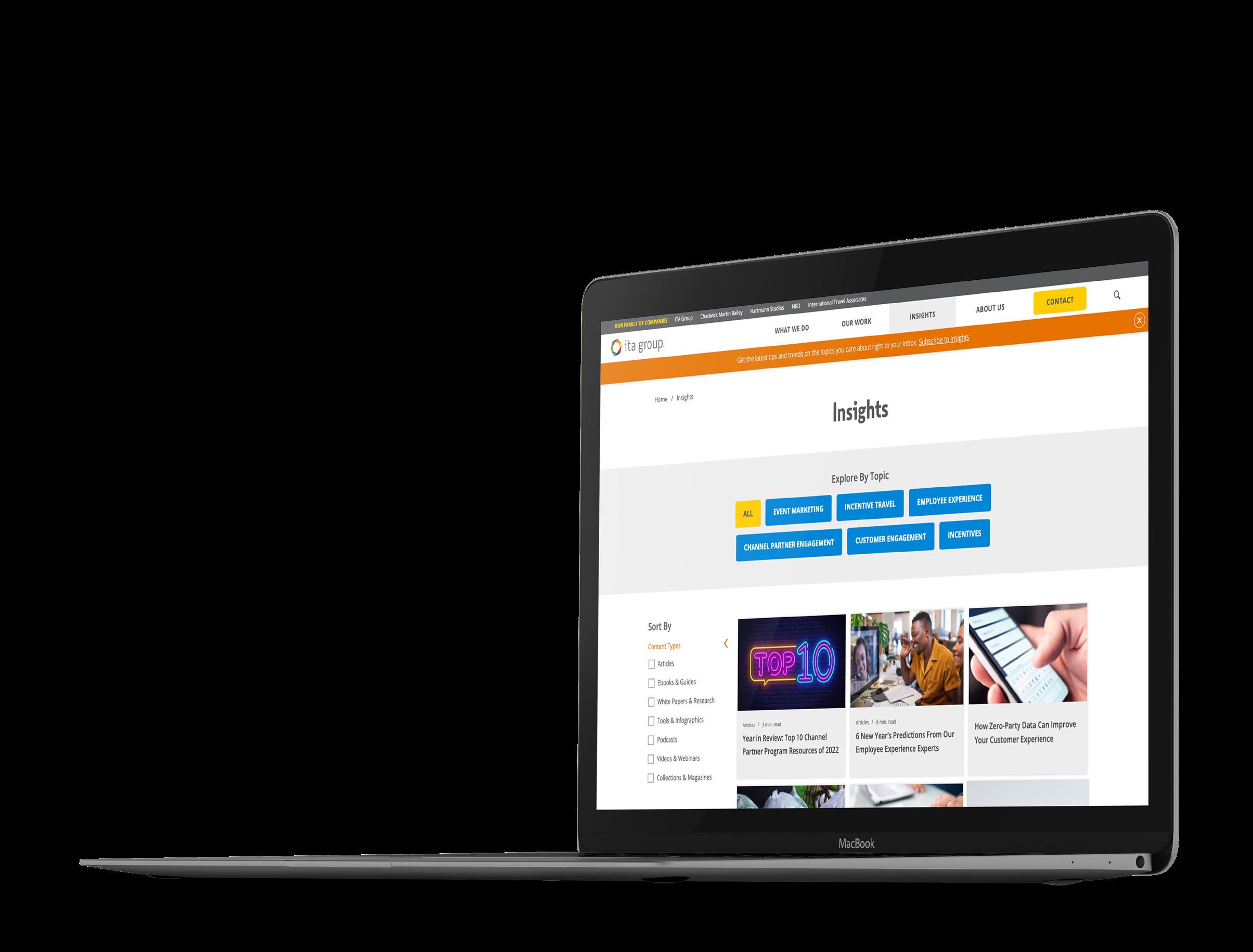
4600 Westown Pkwy West Des Moines, IA 50266 itagroup.com © 2023 ITA Group and/or its affiliates. All rights reserved. Craving More Content? Get the latest tips and trends on the topics you care about right to your inbox. Event Marketing Incentive Travel Employee Experience Channel Partner Engagement Customer Engagement Incentives Subscribe to Insights info.itagroup.com/insights



















 By: Christina Zurek, Employee Experience Expert
By: Christina Zurek, Employee Experience Expert

 By: Christina Zurek, Employee Experience Expert
By: Christina Zurek, Employee Experience Expert













 By: Rob Danna, Senior Vice President, Sales & Marketing
By: Rob Danna, Senior Vice President, Sales & Marketing
